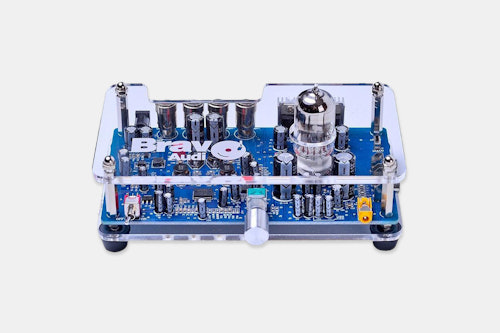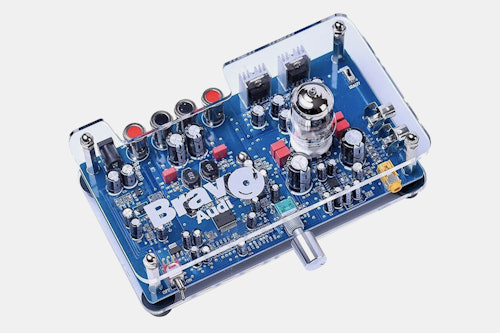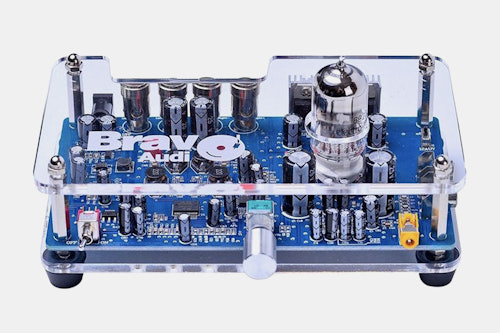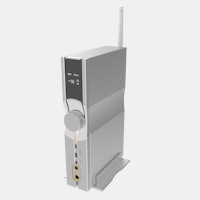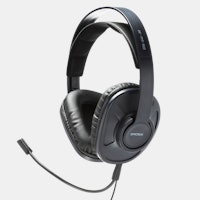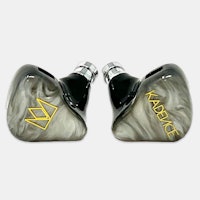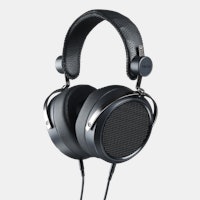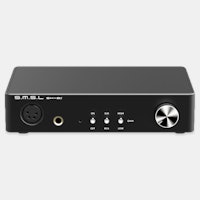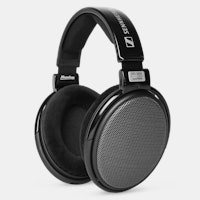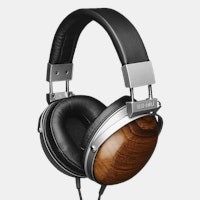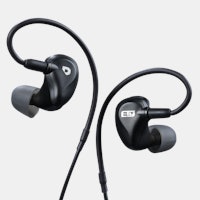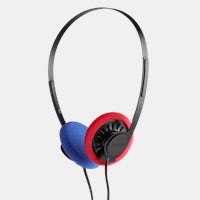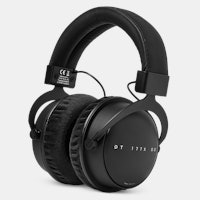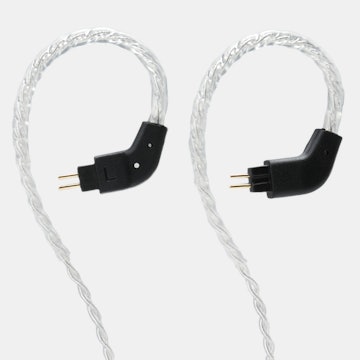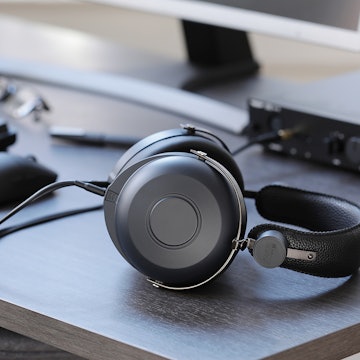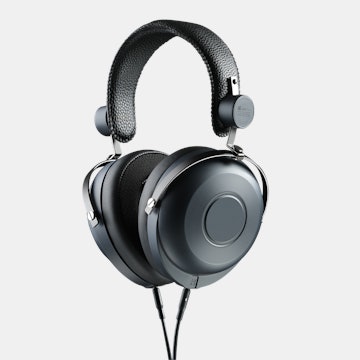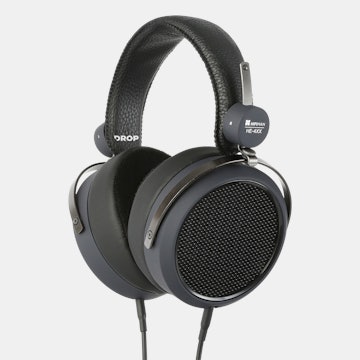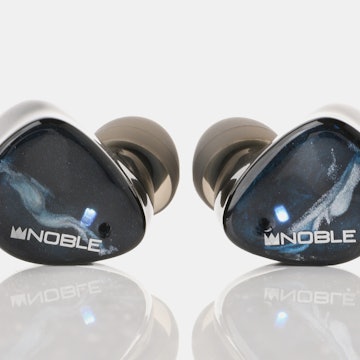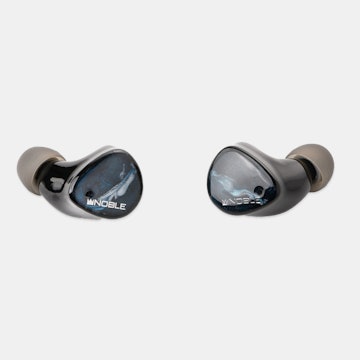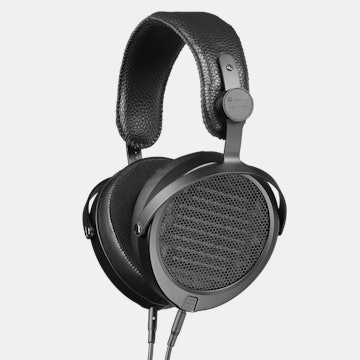Click to view our Accessibility Statement or contact us with accessibility-related questions














Bravo Audio SP1 12AU7 Class A Tube Stereo Amplifier
Bravo Audio SP1 12AU7 Class A Tube Stereo Amplifier
bookmark_border
Where's the price?
To negotiate the best possible price for our customers, we agree to hide prices prior to logging in.
113 requests
Product Description
The Bravo Audio SP1 is billed as a Class A tube amp for headphones, but is actually a hybrid unit that delivers warmth, power, and clarity. That’s because the Class D amplifier provides plenty of even-keeled headroom while the included 12AU7 tube buffer brings an organic warmth and body to your audio Read More

search
close
Sort by: Newest
keyboard_arrow_down
Woktalktalk
4
Dec 21, 2022
MassDrop has I agree lost it luster…. there appears to be gaps and inaccuracies on the copy of the ad here.
It appears to be a class D amplifier with a single input stage tube to add warmth. The 20 watt should be fine for a near field application or where efficient speakers are used.
I saw Elliot Check’s YouTube review of this device that he did 5 years ago and he noted that the op amps used by the manufacture is of very low specification. I’m wonder if the op amps can be easily swapped out for say Texas Instruments TPA3255 or are they soldered to the board?
Also how does one provide power to the unit? It is via wall wort switching adapter and if so is it provided? What is the input voltage and amperage of the power supply it needs?

cartrufer
0
Dec 20, 2022
as I assume power supply is not included...
Please, recommended power supply for this amp?
PhilAudio
18
Oct 5, 2022
So why do drop call it a „headphone“ amplifier but it has no headphone output?
granitestateofmind
75
Oct 5, 2022
- As others have said, there is a serious dearth of important detail, even for such a seemingly great deal - impedance ratings, "customization" switch function...but more importantly, wth powers this thing? I can't believe the "Maximum input voltage: 1V" is referring to the (what looks like a standard 12VDC) power input next to the spkr outs, noting there doesn't appear to be mention of a power supply being included, either. Yeah, no.

ElectronicVices
2940
Oct 6, 2022
granitestateofmindThat 1V reference is most likely the input signal, not the power input.

Evshrug
4145
Keyboard Club Member
Oct 6, 2022
ElectronicVicesYeah, would sound too hot with a 2V source/DAC.
I bet this uses a common wallwart plug to supply power.
(Edited)

Evshrug
4145
Keyboard Club Member
Oct 5, 2022
My first thought after reading the description: “Susvara!!”
My second thought: “$65 amp powering $6000 headphones 🤣”
This is a speaker amp (stereo speaker binding post outputs), not a headphone amp (no output headphone port, just RCA and 3.5mm input ports). Keep in mind, you would want to pick high sensitivity speakers to pair with this, because 20W per speaker isn’t much (is that 20W @4 Ω loads, or 8 Ω loads??). It is possible to mod headphone cables to power them off of speaker taps, and people do it with hungry Planars like the aforementioned HiFiman, but I wouldn’t expect that to be a major selling point here.
Bravo Audio sells some of the cheapest tastes of tube sound you can get. I’m a headphone guy, and I’ll let you know there is a long-running thread on Head-Fi detailing people’s experiences with rolling different tubes, learning how to bias the voltage correctly for the different tubes, getting a soldering iron to try upgrading the capacitors, the resistors, the “star mod” and crosstalk mods, etc. Therein lies the big appeal of these amps (be they for headphones or speakers): welcome to tinker town. If you’ve always wanted to get a taste of what coloration tubes can inject into sound (it’s different than an EQ, it can also round off sharp notes and bad recordings with clipping, add harmonic overtones, a sense of increased soundstage, etc), the Bravo is only like $40 more than the cost of a tube (and it includes one), and if you’ve always wanted to experiment with modding without starting from scratch, the easily removable top plate is a modder’s dream and you will always be able to see the results of your work.
For people who don’t care about tubes, modding, or speakers, I don’t think they would be satisfied with this for long. It’s cheap: so manage expectations.
(Edited)

alkc
3
Oct 5, 2022
My concern would be for electric shock if you accidentally got your fingers into this or maybe damage something. Is this a legitimate concern?

SuperFlyEDSguy
66
Oct 11, 2022
Think this through with me. It says that it’s a Class D amp with the 12AU7 tube being used for buffering, right? However, it first mentioned that it’s a Class A “tube” amp, yes? So, which is it, a “buffer” or an “amp?” If we say “amp” how does the correct class factor in? Well let’s find out! (You probably knew that I was gonna say that. Anyways…)
The back certainly appears to have a “barrel” style input for DC power, like you said a generic “Walmart” adapter should work just fine, and I think you’re right as we don’t really see the components up close, but we are lacking a bridge rectifier and step-down transformer. This immediately should scream that those parts are external and it takes a nominal amount of DC voltage to operate. This is important, like really important, but first…
Let’s get back to the 12AU7 tube, you seem worried that it’ll put out a lot of heat, right?! Actually, no! Really! No. This is because in order to operate as an amp (instead of a buffer) we would need ~300V (DC, but that’s a separate conversation) across the plate in order to allow it to operate in a mode that will support Class A amplification. Oddly, the 12AU7 spec sheet doesn’t discuss Class D, but as we will soon see it doesn’t make much of a difference because of the amount of voltage available across the plate. So, an external transformer may give us something like 12VDC and that’s waaayyyyyyy less than what we would need to operate as an amp, so it’s working as a buffer using a methodology called “starved plate” design. Though you may hear people online saying that this particular design “doesn’t work,” I can assure you that it works just fine to “buffer” audio, it just won’t amplify it! You’d need a solid state counterpart for that while using a 12VDC-ish source. The reason why a “starved plate” (literally starving it for voltage) won’t work for amplification is because the plate is integral to the amplification process, however tubes were not originally designed as buffers, but we discovered when not applying ideal voltages across the plate that we get certain desirable audio characteristics that we didn’t account for when tubes WERE designed for Radar applications and the like.
As the voltage is so low, we are not going to have nearly the heat output that we would with a true Class A amplifier setup using the very same tube, and this is why you’ll sometimes see tube preamps being sold with LEDs making the tube glow inorganically. It’s just cool to look at as it’s not something that we would actually have resulting from such a buffer design, however if the buffer is designed right it will sound quite nice! It just won’t glow red hot!
So, if you were following my logic, you will see — hopefully — that heat is negligible being due to the design constraints of a “starved plate” buffer, and as we are not dealing with something that needs to be EMF protected, there is simply no need for a proper Faraday Cage. A metallic cage would be nice to protect your paws from the hot tubes if using them for true amplification, but a Faraday Cage has an entirely different purpose, one that may be contrary to the design as we’re not dealing with EMF that needs to be shielded from sensitive parts. The tube does not use EM technologies such as inductance, so it would be of absolutely no value to shield it from external EM sources. Perhaps other areas on the board could benefit, if inductance is used for example, just not here by the tube.
Tubes are about as simple as it gets.
Feel free to ask questions if you have any, and I’ll try to answer them to the best of my ability. ✌️
redrooster
10
Oct 5, 2022
yep, how embarrassing drop... to wiff on basic product description. clearly speaker outputs shown and the input 3.5 jack(yellow) is on the input stage next to rca's like most other bravo tube amps. also, can we get more factual info on the "customizing switch" above the rca's? again embarrassing!

Evshrug
4145
Keyboard Club Member
Oct 6, 2022
redroosterI reached out to Drop and they fixed the title, and I recommended they remove mention of headphones from the description too.
redrooster
10
Oct 6, 2022
Evshrugthanks for the effort. title edited but not description. not surprised or expecting drop to ever get this right. many years here ie massdrop days and not first time of gross inaccurate information. most of us here respect and expect objective factual data ie specs. thru our collective comments we will eventually pull out the information that should be provided upon product listing; backwards says I.
agree on the 1v input. unit powered via switching ps. class a preamp, d power. 90+ sensitive speakers recommended. again though, what is the custom switch about? what wire gauge size for output posts?
20w output @ 4 or 8ohm?
never the less, I still support drop through promotional discounts only sans a recent purchase.

Evshrug
4145
Keyboard Club Member
Oct 6, 2022
Fair enough… but the 1V refers to the music signal input, “line out” from your DAC or playback device. I wouldn’t use 20W for my Chane speakers or large tower speakers, but it’s fine for JBL230 speakers or other efficient / sensitive speakers.
I went ahead and reached out to Drop, and they made the product title more accurate and helpful.
(Edited)

scottlu
345
Oct 6, 2022
scottlufrom the photo,
the left side looks like a class D amp, 20w is reasonable.
on the right side , looks like a headphone amp.
Recent Activity
